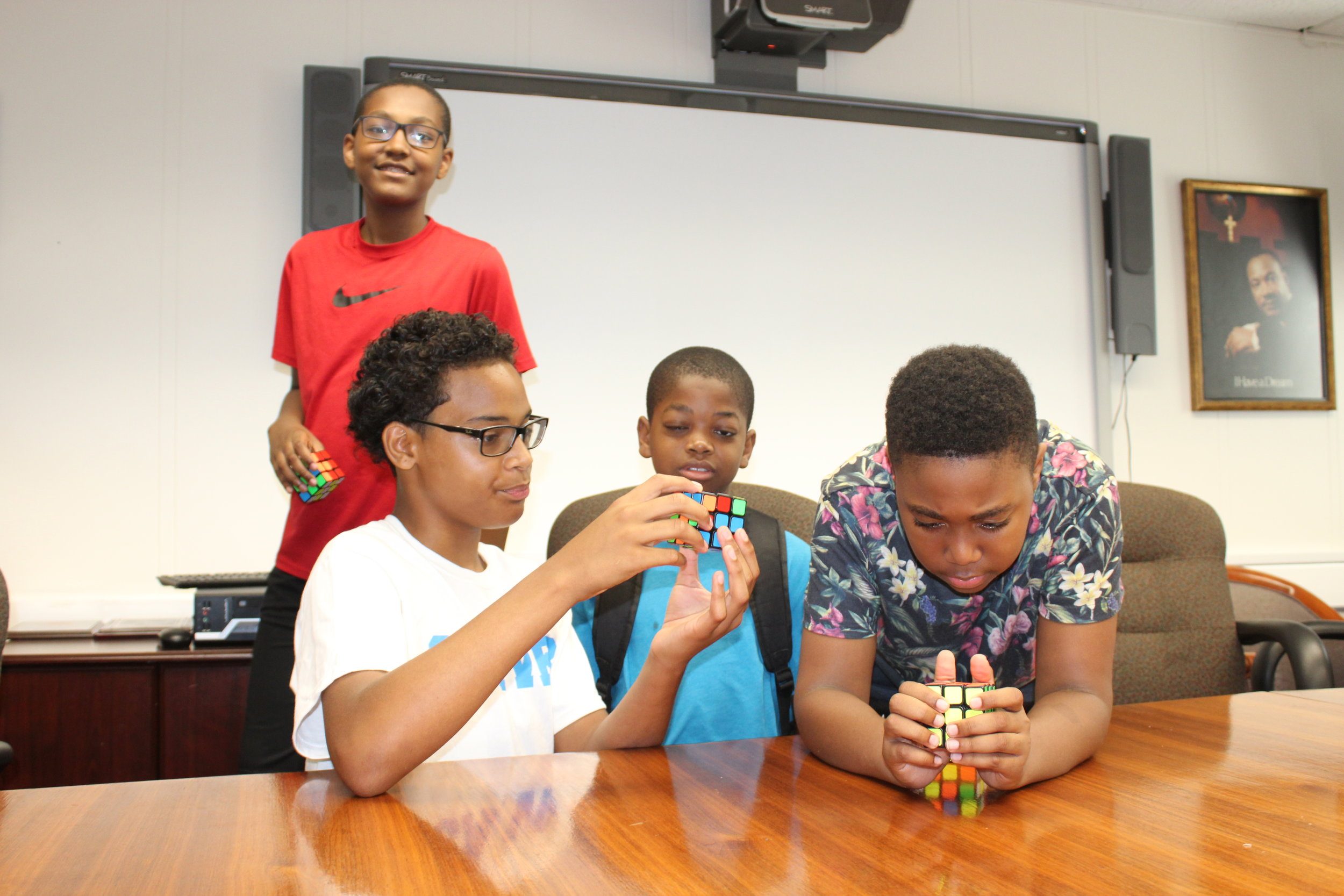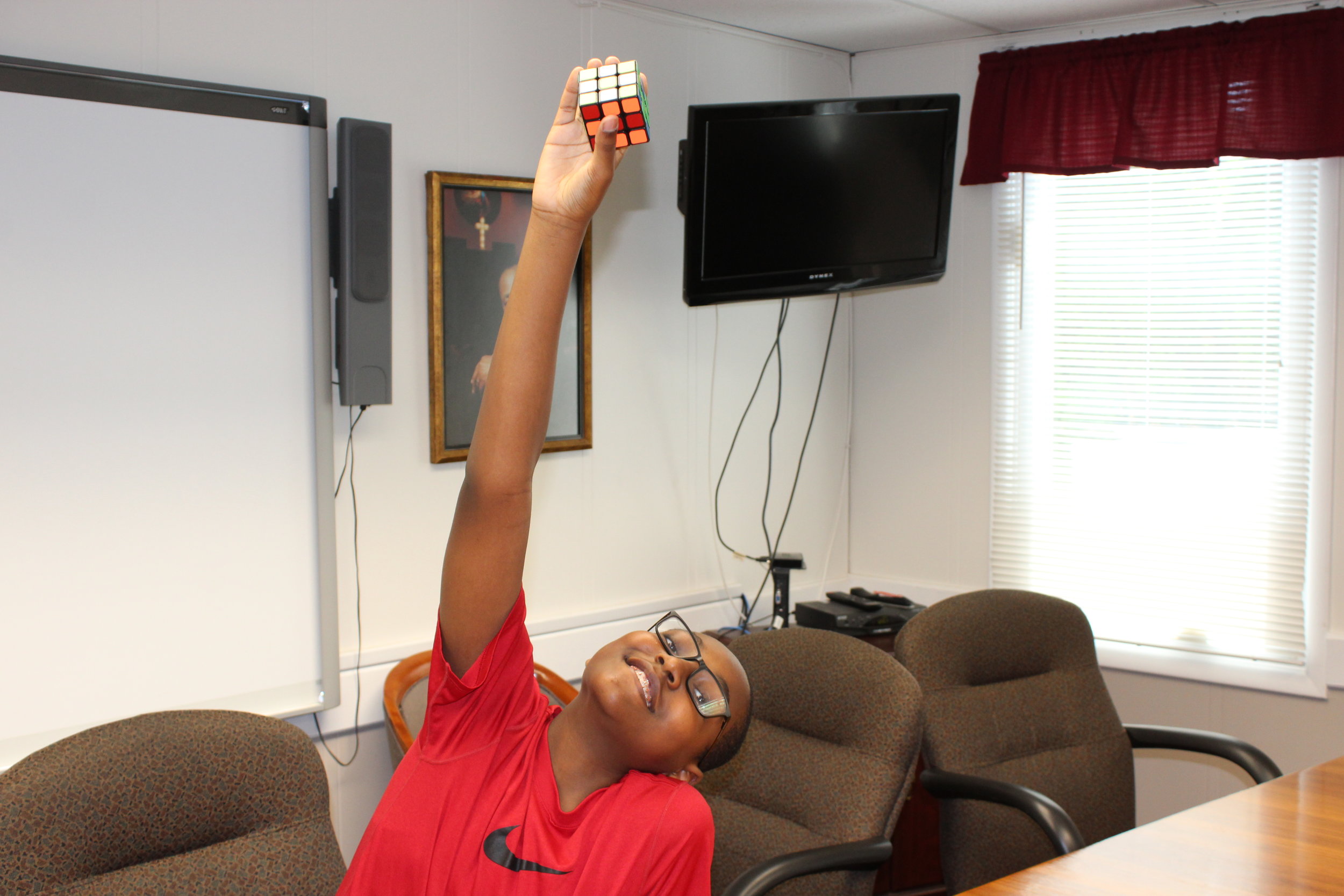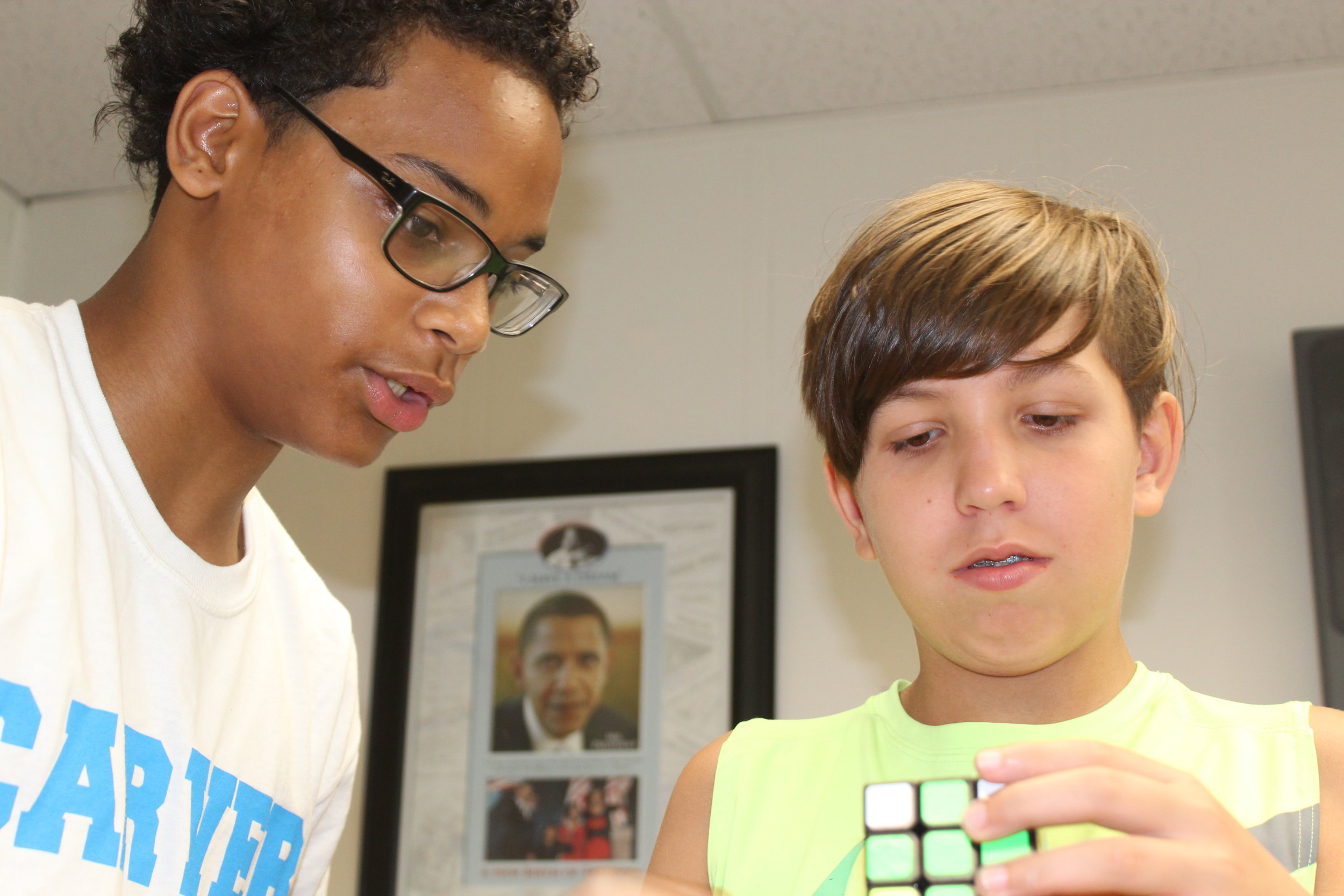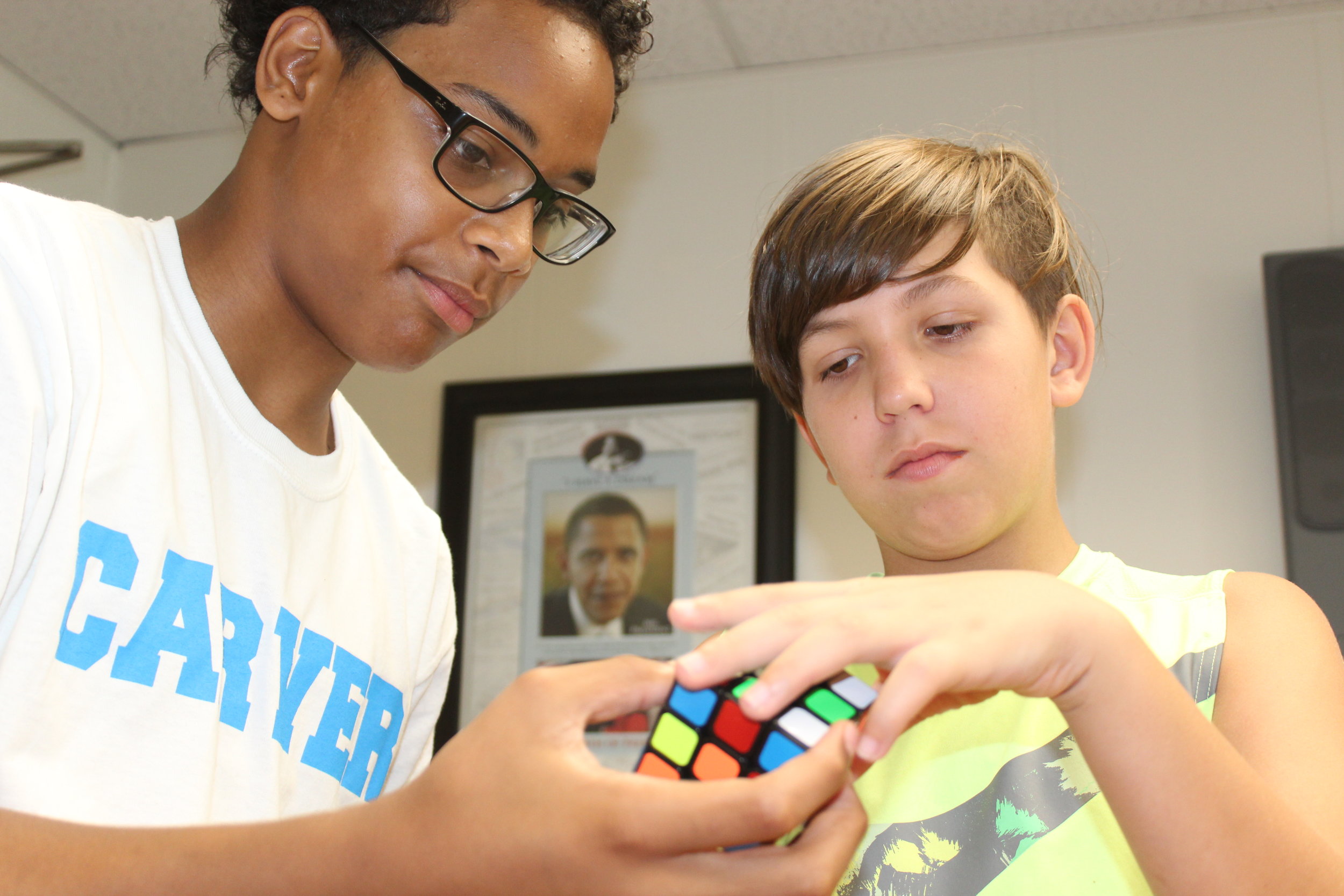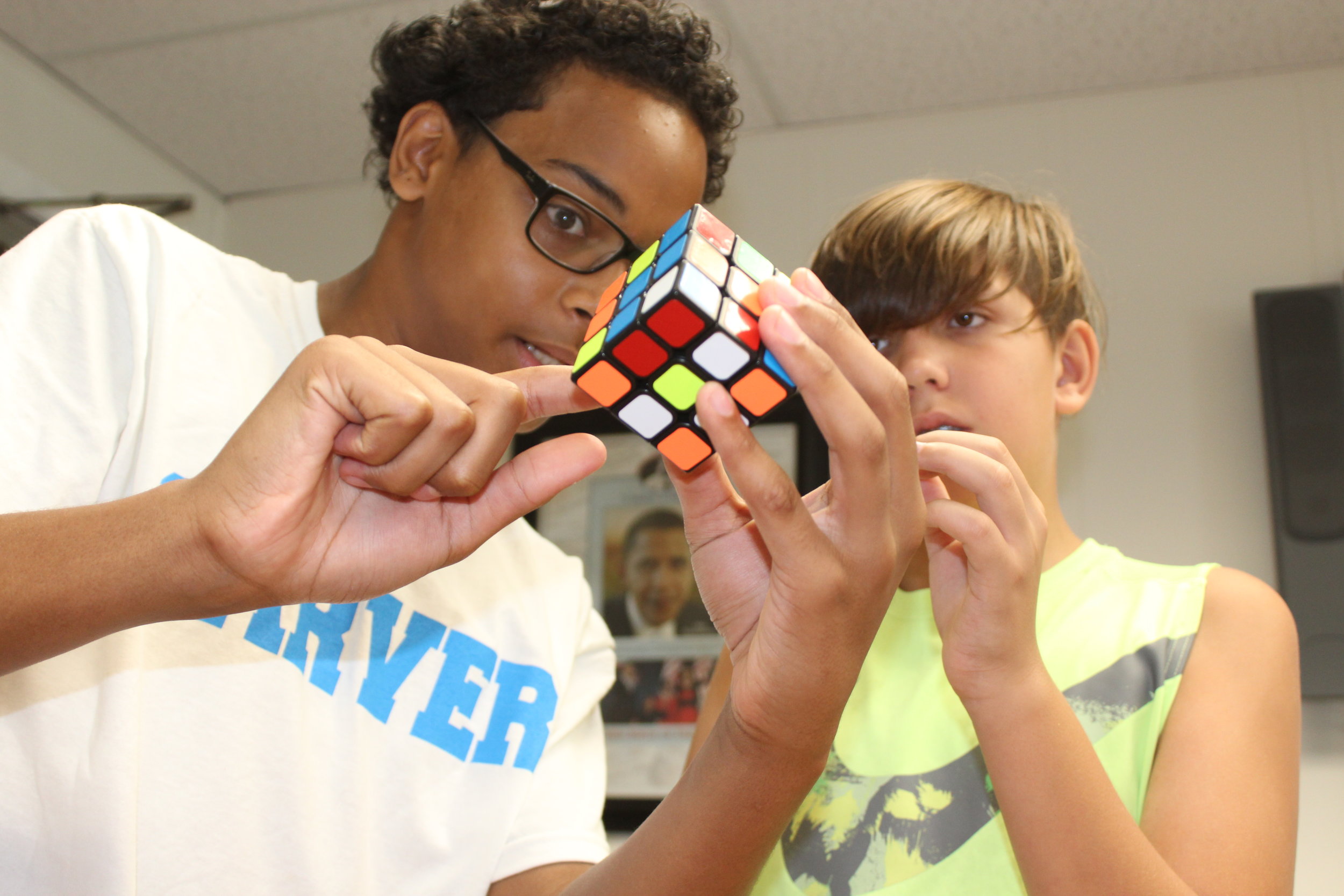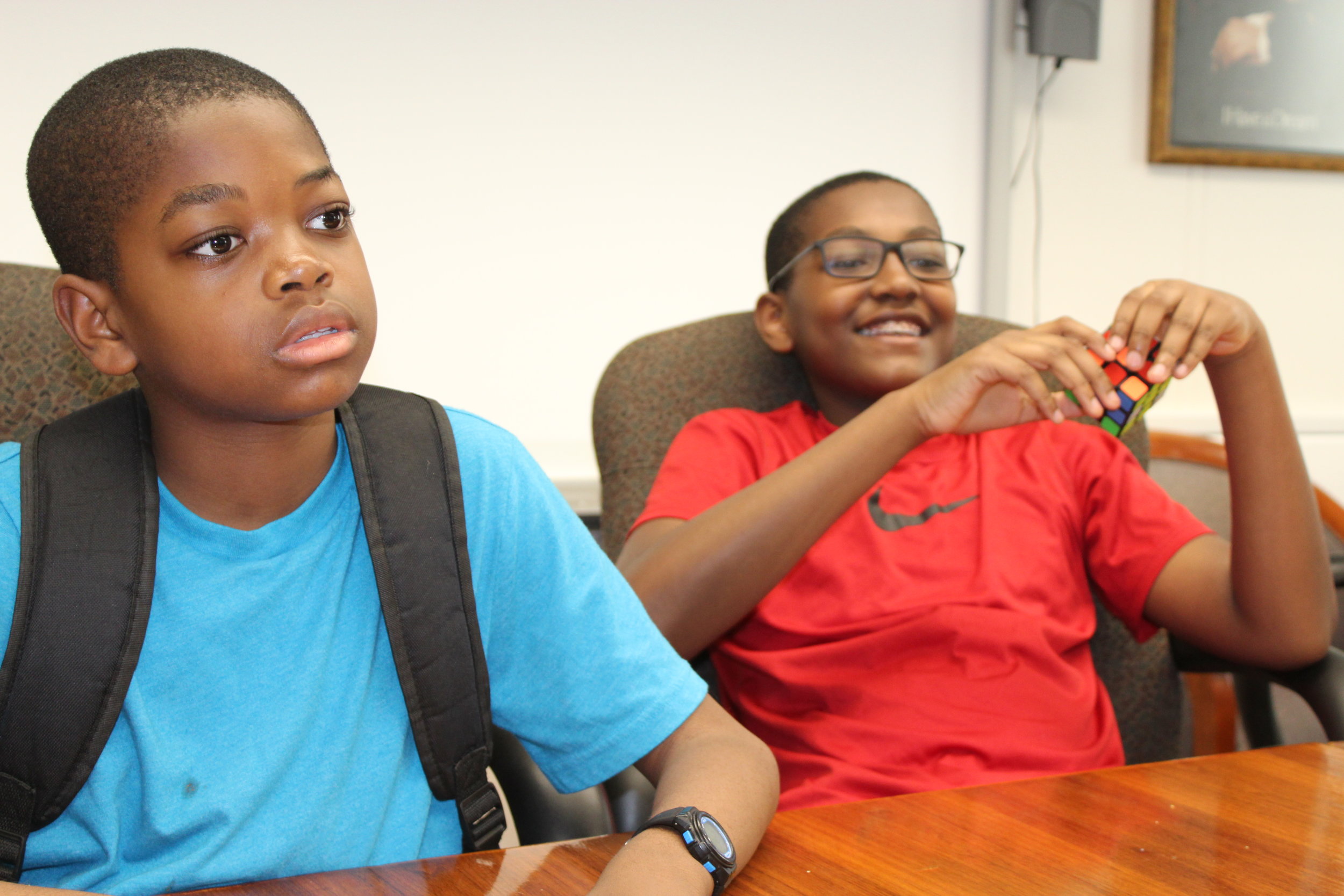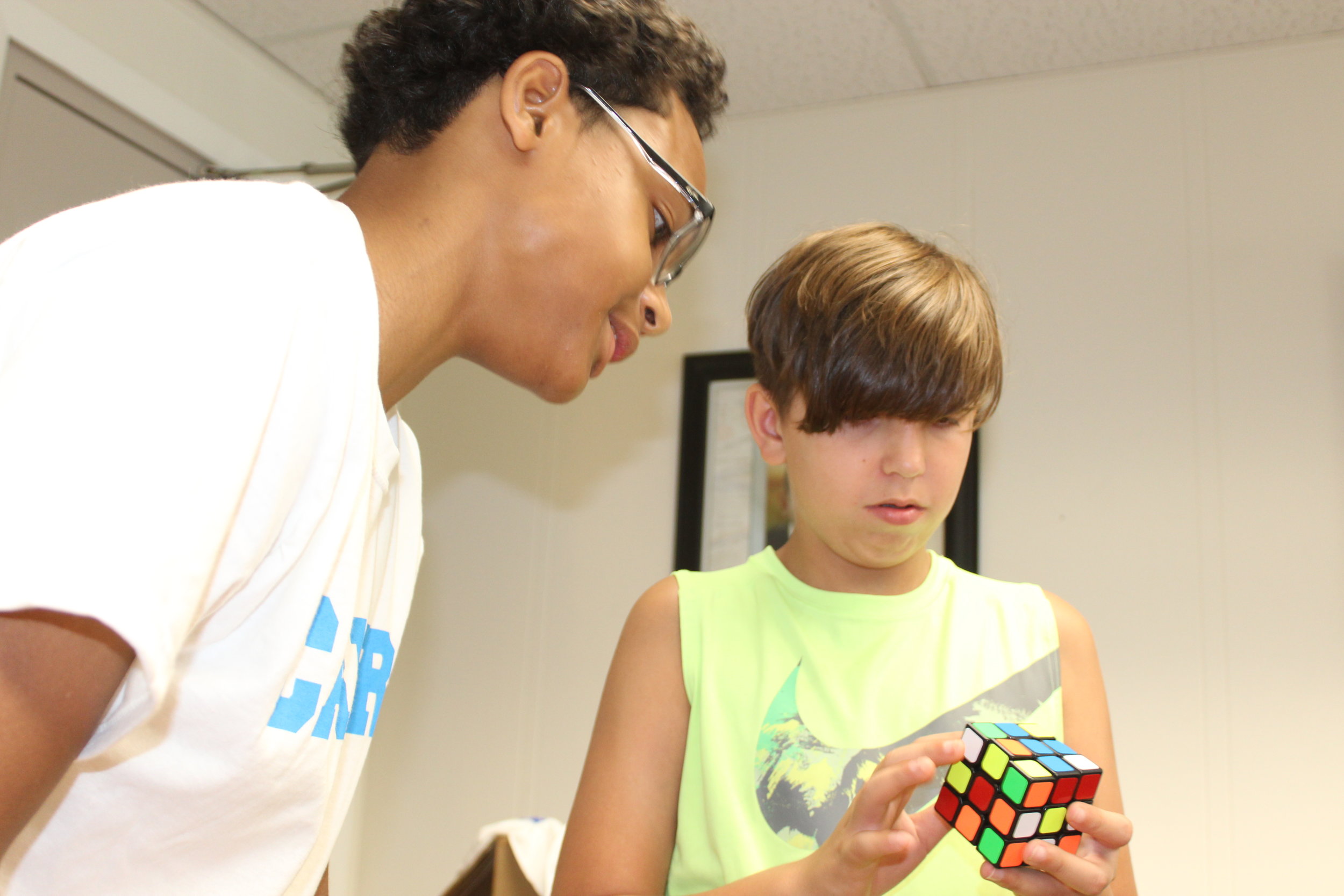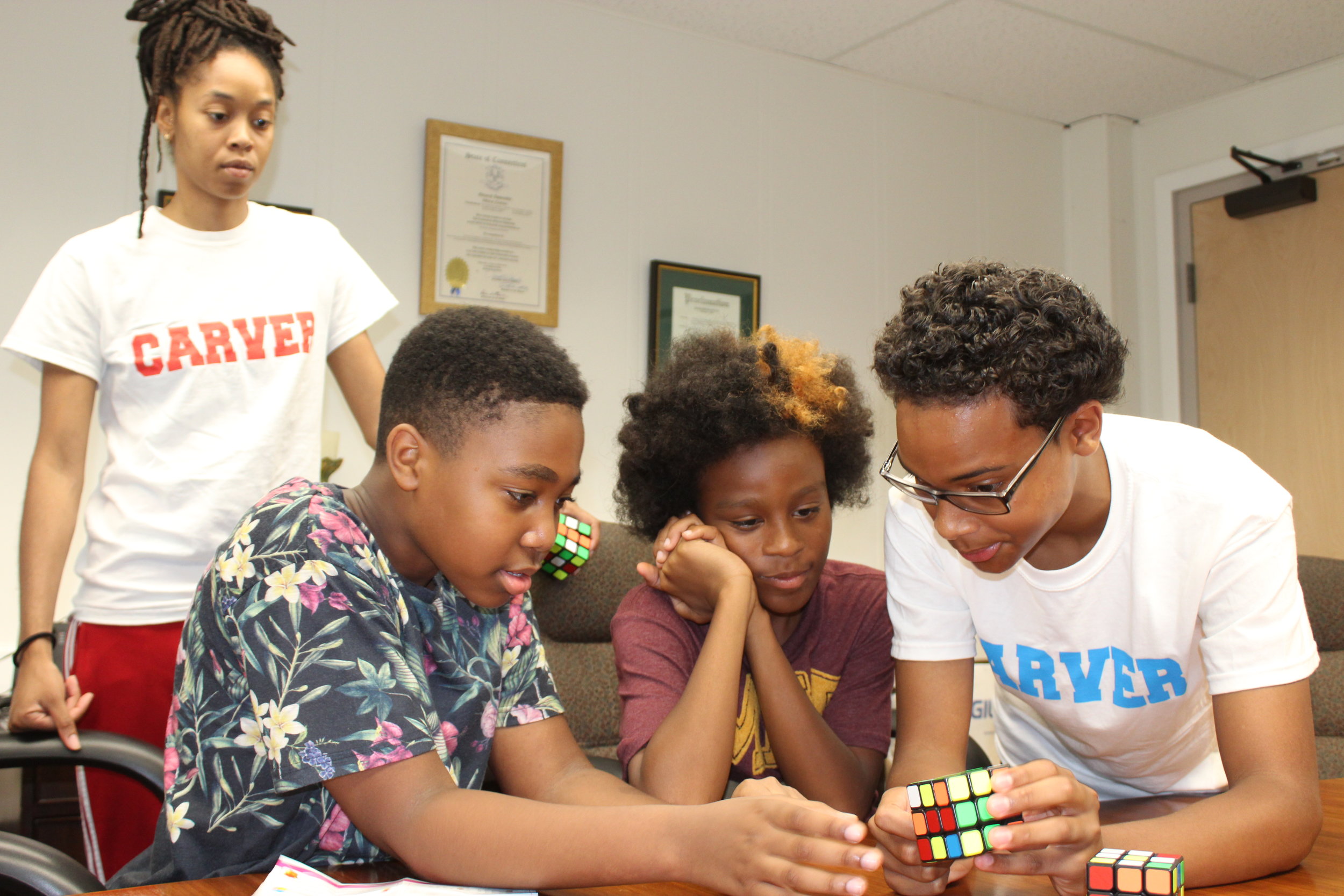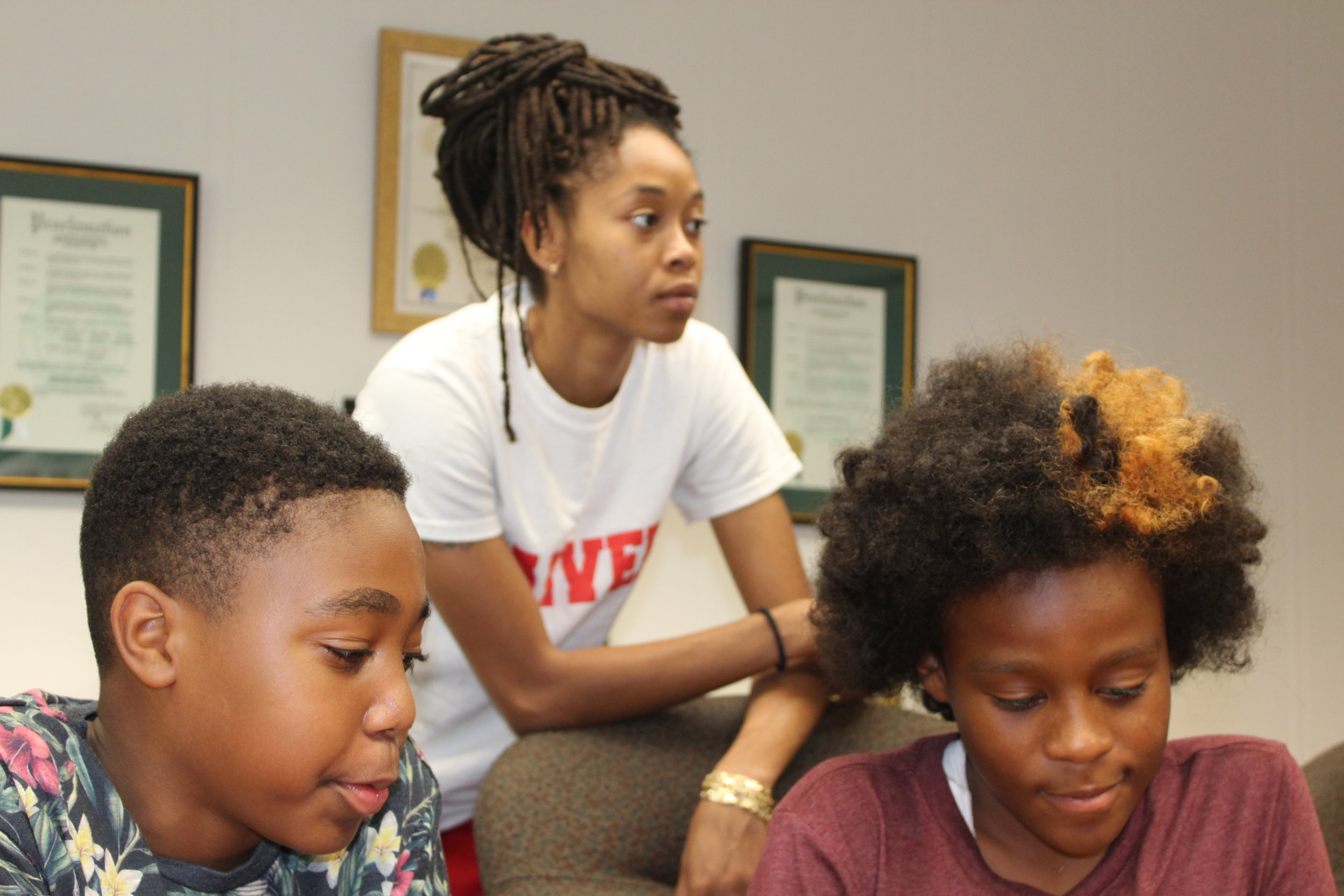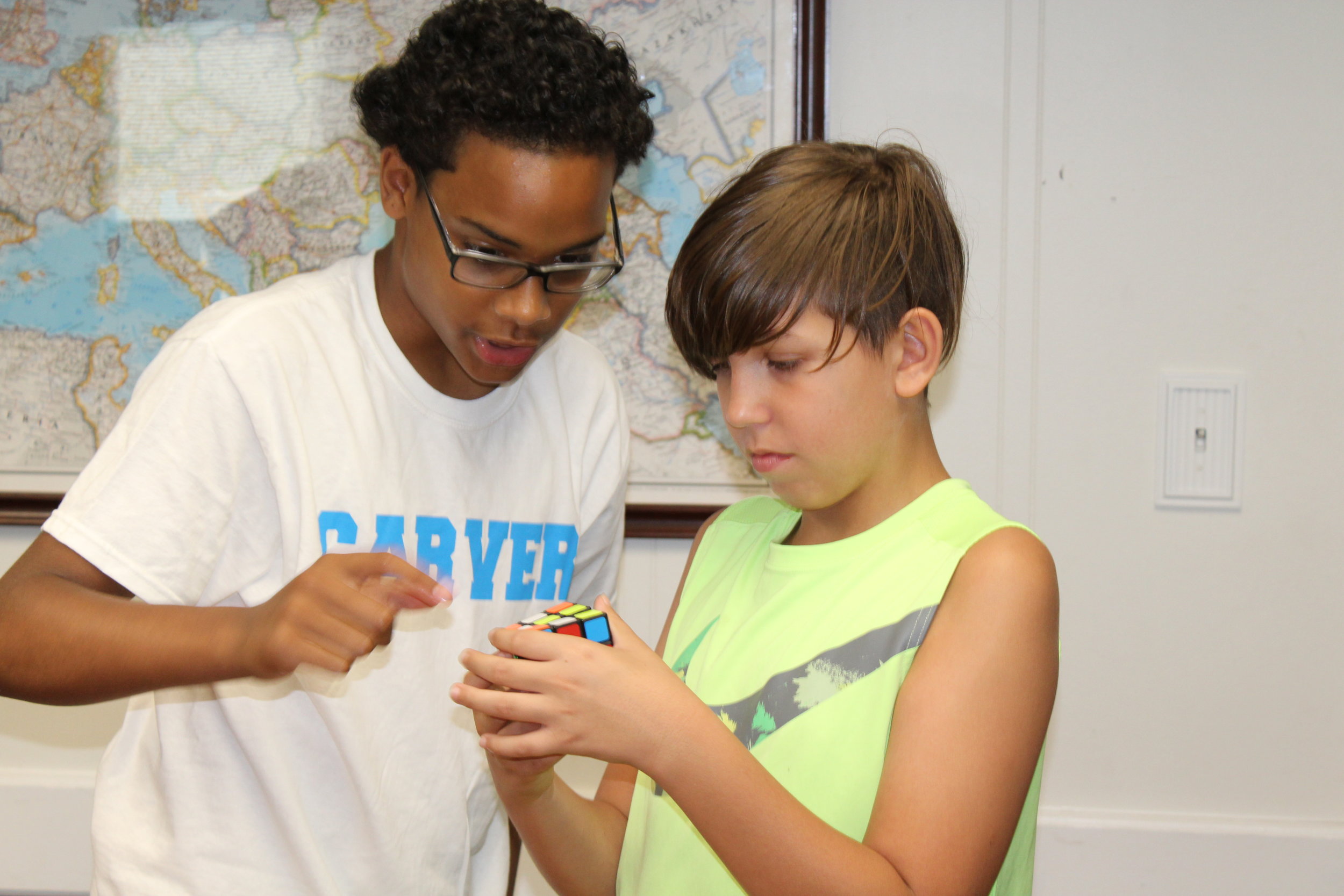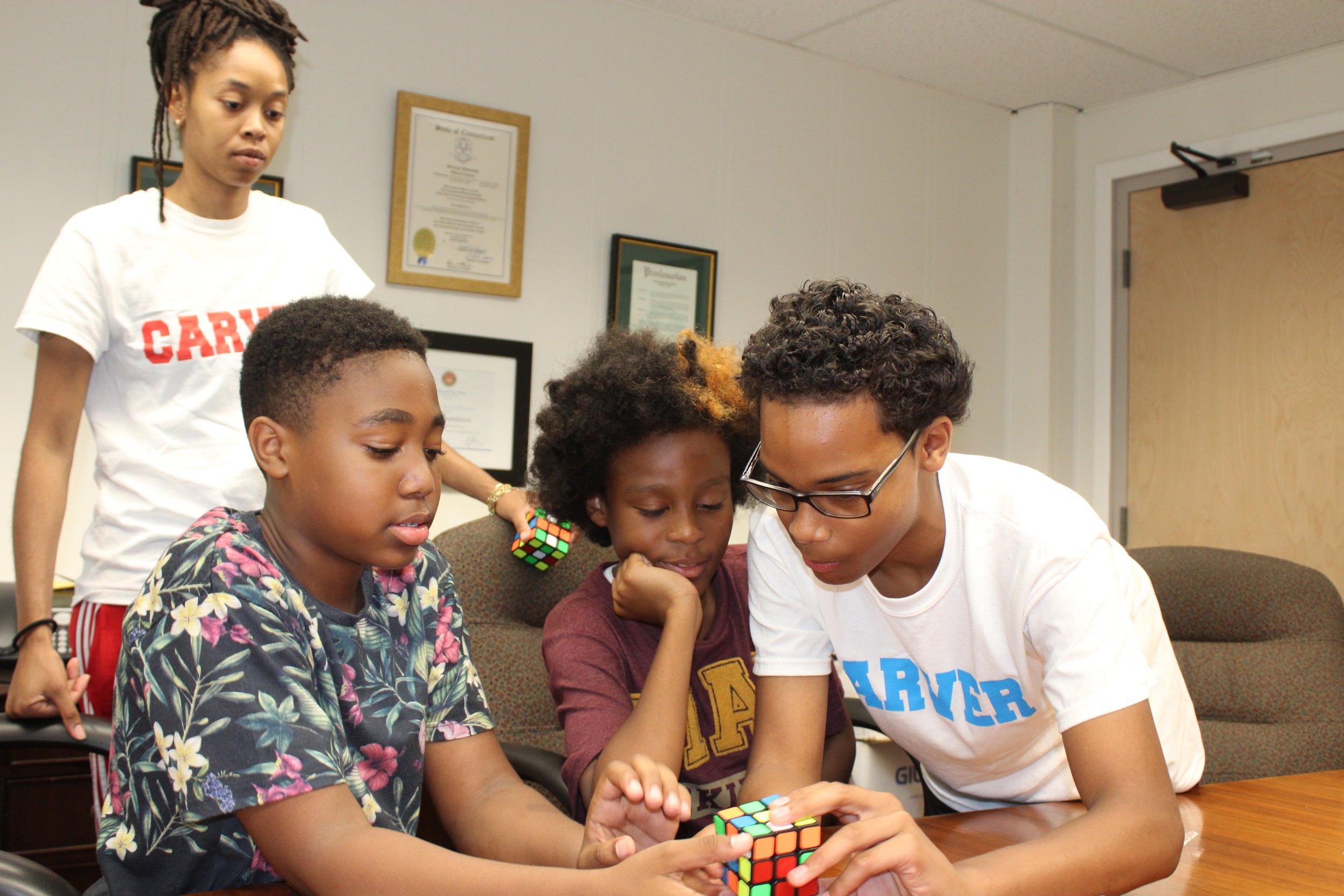Jaden Snow with Carver summer camper
Jaden Snow, who will be a ninth grader at Rye Neck High School this fall, can solve the Rubik’s Cube in a minute or so. Jaden is revealing his technique in a workshop for 10 to 11 year old boys at the Carver Community Center this summer.
Jaden is committing 61 hours of service altogether to Carver kids this summer, also helping our camp counselors who are responsible for the 5 and 6 year old students.
The Rubik’s Cube workshop occurs for one hour per day for two weeks for students attending Carver’s Summer Enrichment Program. Jaden raised the funds to provide each participating camper with his own Rubik’s Cube to keep (and to take home to practice with during the summer’s workshop). Jaden also provides support to Carver summer camp counselors and their supervisors during the day.
The Rubik's Cube (originally called the Magic Cube) is a 3-D combination puzzle invented in 1974 by Hungarian sculptor and professor of architecture Ernő Rubik.
Each of the six faces of the Rubik’s Cube is covered by colored plastic panels: white, red, blue, orange, green, and yellow. White is opposite yellow, blue is opposite green, and orange is opposite red, and the red, white and blue are arranged in that order in a clockwise arrangement. An internal pivot mechanism enables each face to turn independently, thus mixing up the colours. For the puzzle to be solved, each face must be returned to have only one color.
In the mid-1970s, Ernő Rubik worked at the Department of Interior Design at the Academy of Applied Arts and Crafts in Budapest. Although it is widely reported that the Cube was built as a teaching tool to help his students understand 3D objects, his actual purpose was solving the structural problem of moving the parts independently without the entire mechanism falling apart. He did not realise that he had created a puzzle until the first time he scrambled his new Cube and then tried to restore it. Rubik applied for a patent in Hungary for his "Magic Cube" (Bűvös kocka in Hungarian) on 30 January 1975.
As most people could only solve one or two sides, numerous books were published including David Singmaster's Notes on Rubik's "Magic Cube" (1980) and Patrick Bossert's You Can Do the Cube (1981). At one stage in 1981 three of the top ten best selling books in the US were books on solving the Rubik's Cube, and the best-selling book of 1981 was James G. Nourse's The Simple Solution to Rubik's Cube which sold over 6 million copies. In 1981 the Museum of Modern Art in New York exhibited a Rubik's Cube, and at the 1982 World's Fair in Knoxville, Tennessee a six-foot Cube was put on display. ABC Television even developed a cartoon show called Rubik, the Amazing Cube. In June 1982 the First Rubik's Cube World Championship took place in Budapest, and would become the only competition recognized as official until the championship was revived in 2003.

